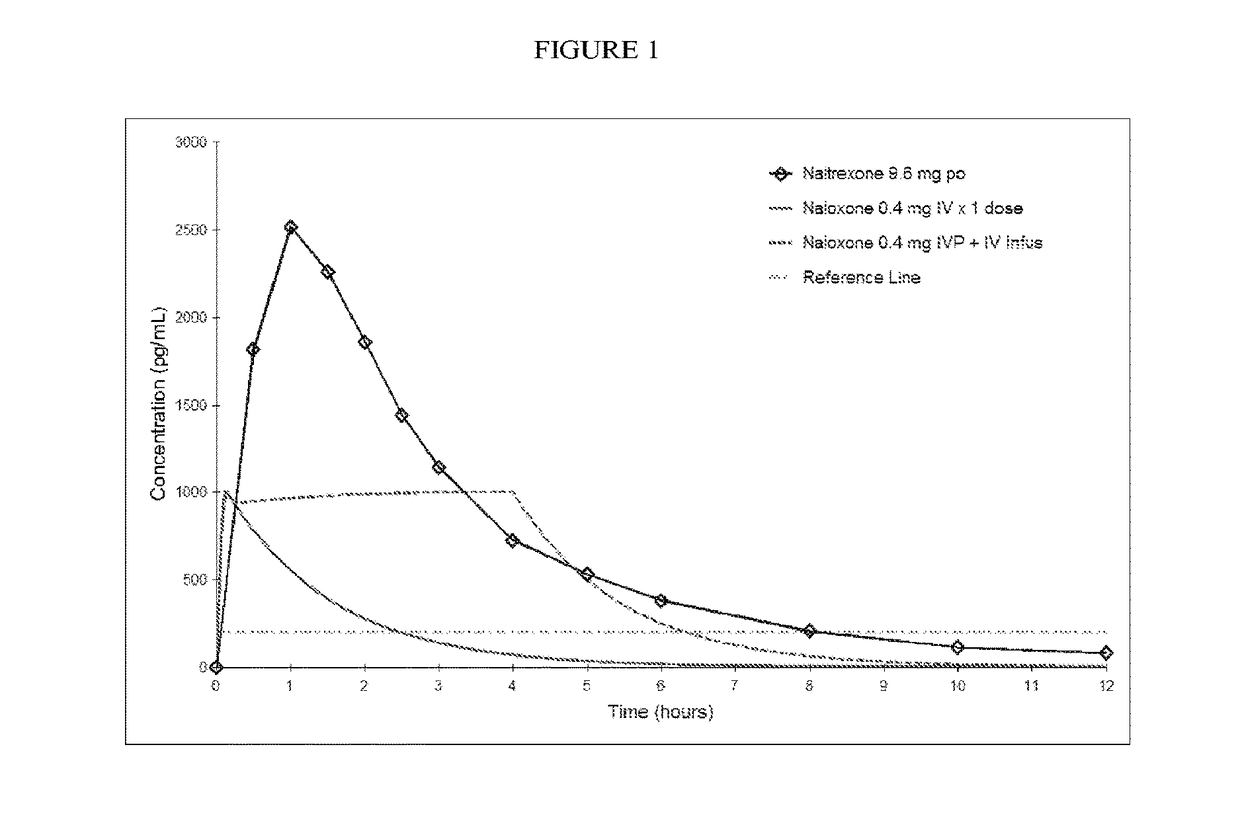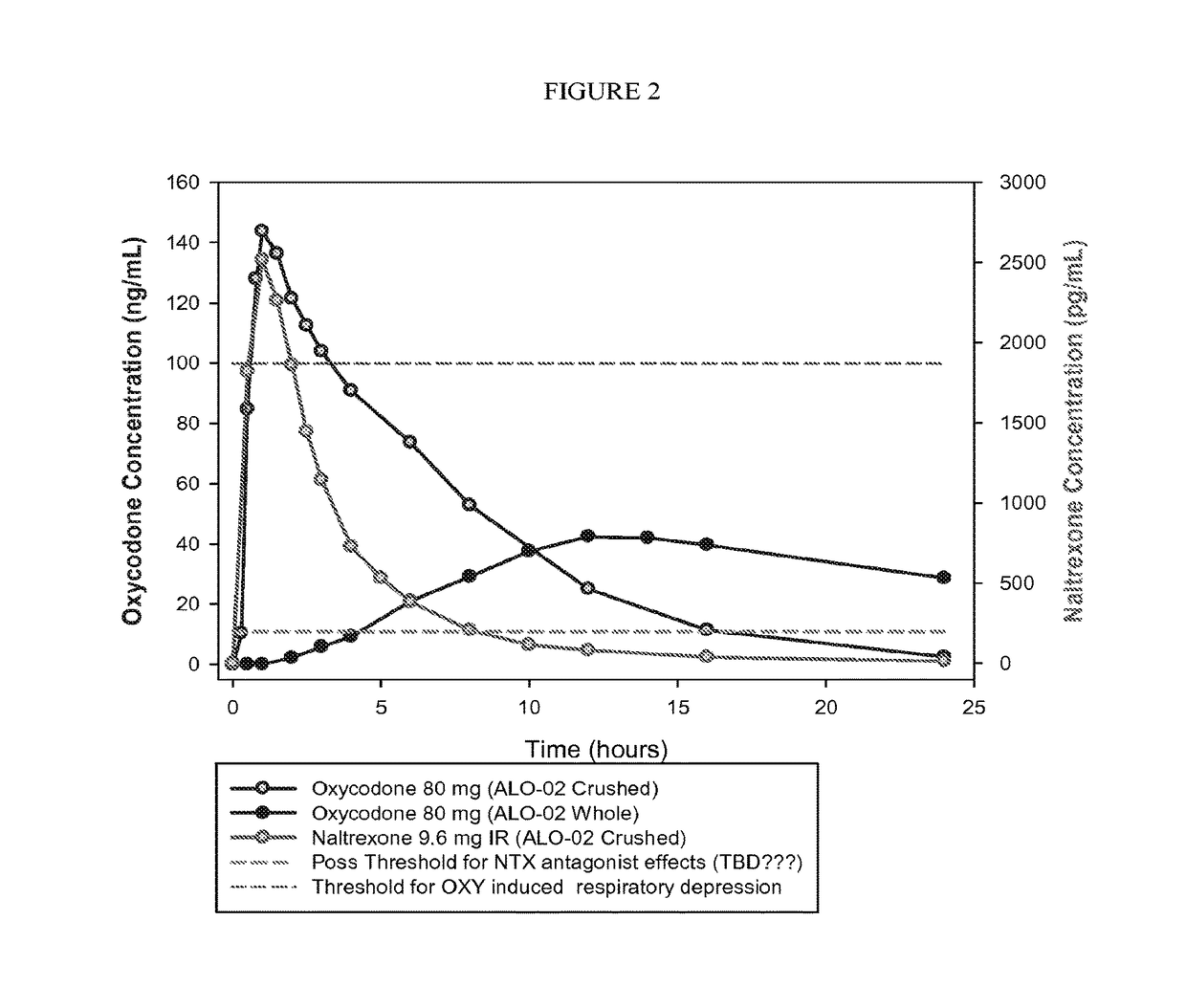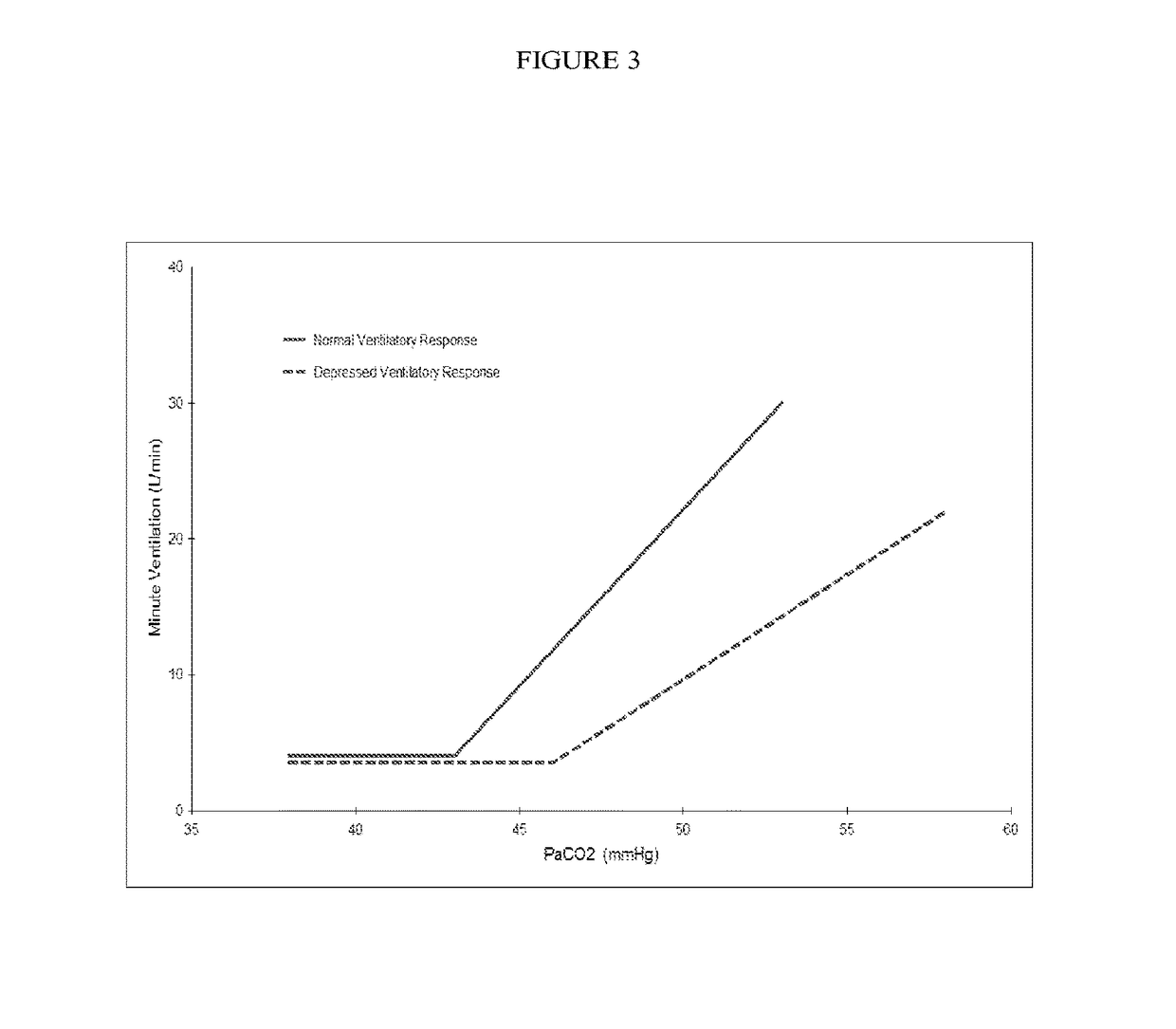Formulations and Methods for Attenuating Respiratory Depression Induced by Opioid Overdose
a technology of respiratory depression and opioid overdose, which is applied in the field of formulations and methods for attenuating respiratory depression induced by opioid overdose, can solve the problems of reducing or reducing the euphoric effects of morphin
- Summary
- Abstract
- Description
- Claims
- Application Information
AI Technical Summary
Benefits of technology
Problems solved by technology
Method used
Image
Examples
example 1
Effects of I.V. Naltrexone on Morphine-Induced Respiratory Depression in Healthy Volunteers
[0053]The respiratory depression study is a double-blind, randomized, 4-way crossover study in healthy volunteers, male or female subjects between the ages of 21 and 35 years, inclusive, and in generally good health as determined by the Investigator.
[0054]In Part A Dosing Period I, following a 15-day Screening period, a cohort of 4 subjects meeting the study inclusion / exclusion requirements is enrolled and randomized in a 3:1 ratio to receive either morphine sulfate injection 10 mg (N=3) or placebo (N=1).
[0055]During each treatment period, each subject is admitted to the clinic unit on the evening of Day −1. On Day 1 the subject receives study drug(s) and undergoes the pharmacodynamic, pharmacokinetic, and safety assessment procedures. The subject remains in the clinic unit until the morning of Day 2 at which time they are discharged from clinical unit at the discretion of the Investigator.
[00...
example 2
[0108]Effects of I.V. Naltrexone on Morphine-Induced Respiratory Depression in Non-Dependent Opioid Preferring Male Subjects
[0109]A single-dose, three-way crossover study in 28 opioid experienced, non-dependent male subjects indicate that naltrexone HCl1.2 mg administered intravenously in combination with morphine sulfate 30 mg (Treatment A) significantly diminished morphine-induced respiratory depression compared with intravenous morphine sulfate 30 mg administered alone (Treatment B) or normal saline (placebo, Treatment C) (FIG. 4). All subjects were randomized to three sequential treatment doses using a cross-over design. Subjects received one dose on each dosing day in a double-blinded, cross-over manner (with a 6 day outpatient washout in between). An exploratory Analyses of EtCO2 detected statistically significant differences in LS means across all treatment groups for Emax, and partial AUEs (p2 levels (p=0.3064), which emphasizes the PD effect of morphine displacement on the ...
example 3
Naltrexone Dose Ranging Study to Block Oxycodone-Induced Respiratory Depression
Design and Investigational Plan:
[0110]The study is a randomized, double-blind, 5-way crossover study to evaluate the effects of oral naltrexone on oxycodone-induced respiratory depression in healthy male and female adult volunteers. The threshold dose of oxycodone that produces respiratory depression is investigated as a two part study. In Part A (Oxycodone Dose Response) escalating single doses of oxycodone immediate-release (IR) tablets will be administered orally to healthy volunteers to determine the appropriate dose of oxycodone that would safely produce distinguishable reductions in respiratory function (measured as reduced minute ventilation) in healthy volunteers. The oxycodone dose selected from Part A is used in Part B (Naltrexone Dose Response) in healthy volunteers to evaluate the naltrexone dose-response relationship with respect to attenuating oxycodone-induced respiratory depression.
Screeni...
PUM
 Login to View More
Login to View More Abstract
Description
Claims
Application Information
 Login to View More
Login to View More - R&D
- Intellectual Property
- Life Sciences
- Materials
- Tech Scout
- Unparalleled Data Quality
- Higher Quality Content
- 60% Fewer Hallucinations
Browse by: Latest US Patents, China's latest patents, Technical Efficacy Thesaurus, Application Domain, Technology Topic, Popular Technical Reports.
© 2025 PatSnap. All rights reserved.Legal|Privacy policy|Modern Slavery Act Transparency Statement|Sitemap|About US| Contact US: help@patsnap.com



